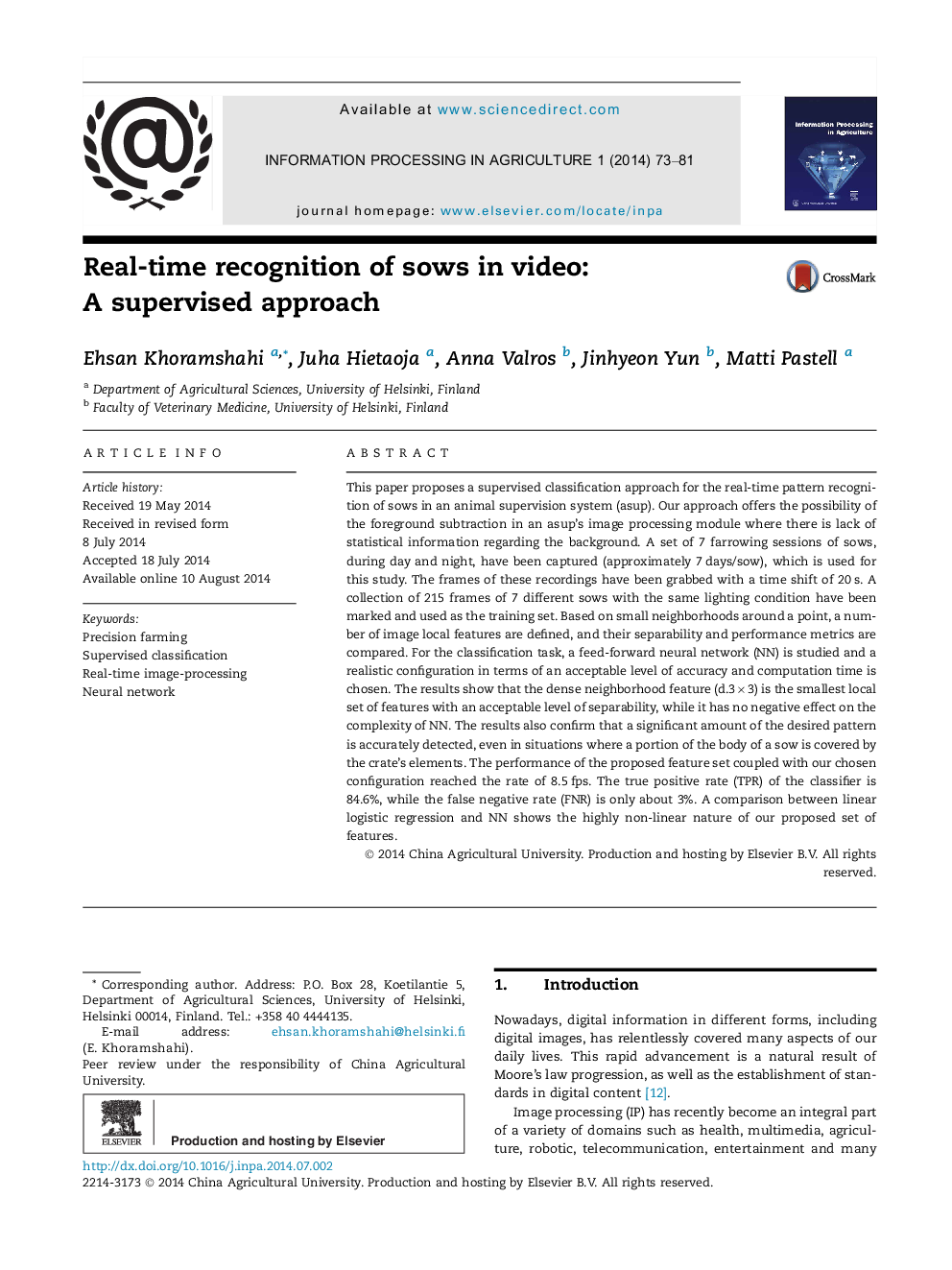| Article ID | Journal | Published Year | Pages | File Type |
|---|---|---|---|---|
| 4493369 | Information Processing in Agriculture | 2014 | 9 Pages |
•We defined several local features to extract an animal pattern.•We examined the non-linearity of the proposed image features and compared them.•We proposed a supervised classification scheme.•Increasing in the point density will generally increase the separability.•The feature coding d.3 × 3 proved as the most economical feature.
This paper proposes a supervised classification approach for the real-time pattern recognition of sows in an animal supervision system (asup). Our approach offers the possibility of the foreground subtraction in an asup’s image processing module where there is lack of statistical information regarding the background. A set of 7 farrowing sessions of sows, during day and night, have been captured (approximately 7 days/sow), which is used for this study. The frames of these recordings have been grabbed with a time shift of 20 s. A collection of 215 frames of 7 different sows with the same lighting condition have been marked and used as the training set. Based on small neighborhoods around a point, a number of image local features are defined, and their separability and performance metrics are compared. For the classification task, a feed-forward neural network (NN) is studied and a realistic configuration in terms of an acceptable level of accuracy and computation time is chosen. The results show that the dense neighborhood feature (d.3 × 3) is the smallest local set of features with an acceptable level of separability, while it has no negative effect on the complexity of NN. The results also confirm that a significant amount of the desired pattern is accurately detected, even in situations where a portion of the body of a sow is covered by the crate’s elements. The performance of the proposed feature set coupled with our chosen configuration reached the rate of 8.5 fps. The true positive rate (TPR) of the classifier is 84.6%, while the false negative rate (FNR) is only about 3%. A comparison between linear logistic regression and NN shows the highly non-linear nature of our proposed set of features.
